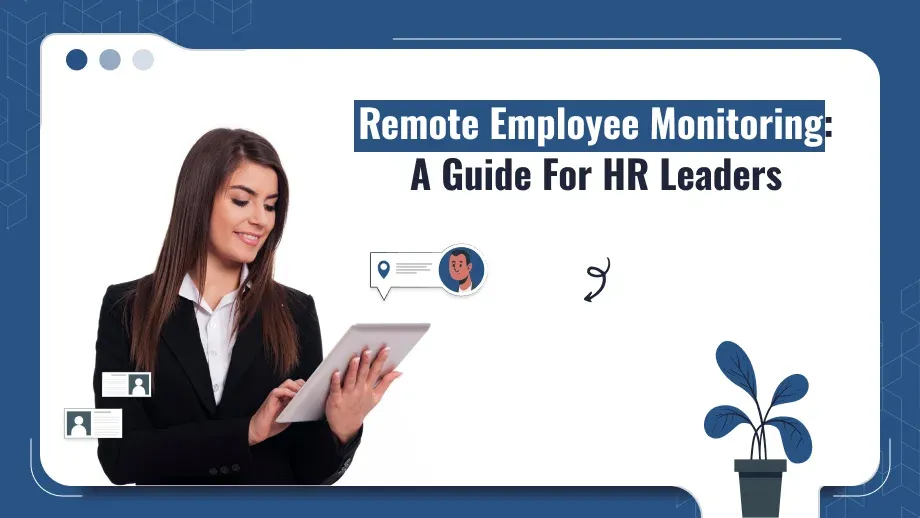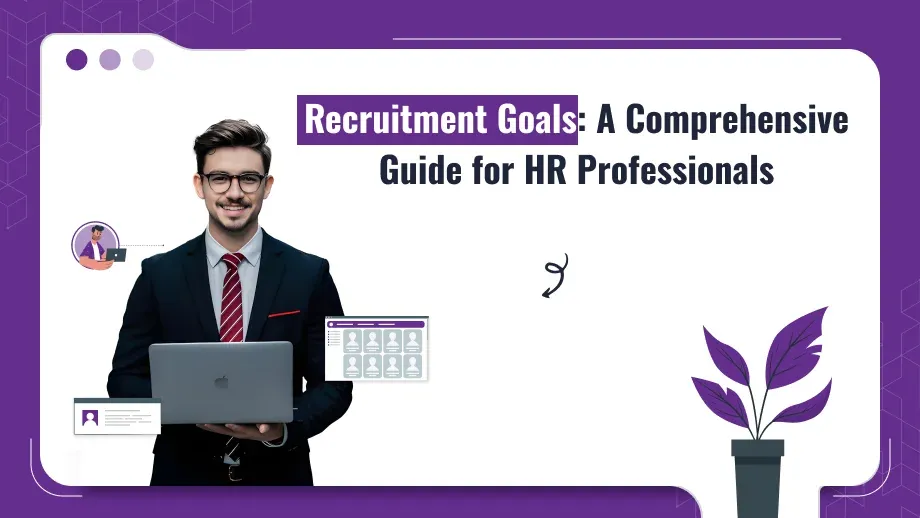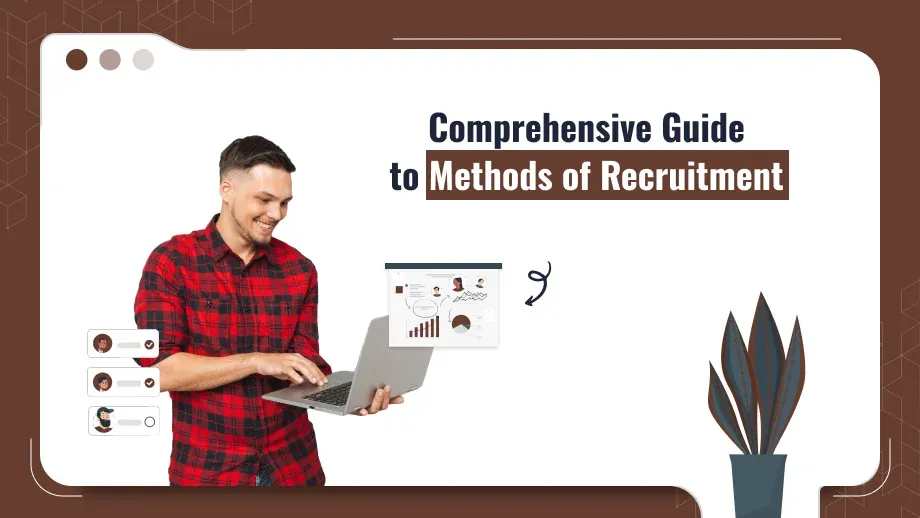
The changing nature of remote work is transforming the contemporary workplace, a lot of companies have taken advantage of the freedom and freedom that comes with remote teams. However, this change also comes with an entirely new set of problems – specifically regarding engagement, productivity, and accountability. This is the beginning of remote employee monitoring, the method being employed to ensure that things run efficiently in this modern world.
Monitoring of employees remotely is an application of technology that allows you to supervise and monitor the activities of employees in remote or hybrid workplaces. It could be simple time-tracking software, or higher-end solutions, such as keystroke logs, monitors for screens, and cloud-based project administration platforms. These tools can bring numerous advantages in terms of efficiency and transparency, they pose important ethical questions about security, privacy, and trust.
Why Remote Employee Monitoring is on the Rise
The Shift to Remote Work
The COVID-19 virus has accelerated the transition to remote working and lots of companies are employing a hybrid or a fully remote workforce, even though the restrictions have been decreased. This transition came with an entirely new set of unexpected events. CEOs and HR managers had to work hard to assess performance, and efficiency, and collaborate without the benefits of direct interactions.
With businesses expanding their global talent pool, the necessity for software to monitor remote employees was evident. Since employees work in different regions and time zones Companies needed to find a way to ensure that all employees were in sync with the company’s targets. Monitoring tools bridged the gap in real-time reporting of the activities of employees to help teams be productive, efficient, and accountable.
Challenges of Visibility
One of the major challenges in remote work is the lack of visibility. In the traditional workplace, the managers are able to easily monitor who is working, who’s co-working with whom, and the way things are moving along. However, in remote settings, there is no visibility. Monitoring remote employees is essential. By using the appropriate tools, HR directors and CEOs will be able to oversee employee duties and their performance, without the need for regular video conferences or checks-ins.
Plus remote employee monitoring software gives insights into how long employees spend on specific tasks, how they manage their workload, and how engaged they are with their responsibilities. This allows companies to optimize performance and provide managers with the information they need to intervene at the right time often as part of broader Employee Engagement Strategies to keep teams motivated and productive.
Accountability and Productivity Tracking
If there is no supervisor or manager in person, there’s a chance that there’s a chance that employees aren’t more productive than they could have been in an office. That’s why remote employee monitoring software can be a key instrument for monitoring time, tasks completed, as well as overall efficiency. Employees are held accountable for their hours as well as their work.
Tools that track productivity also allow HR to see trends in employee engagement. For instance, when employees are regularly working late or less engaged with key tasks, the monitoring system will alert HR and HR will be able to intervene before the issue affects the business.
Data-Driven Decision Making
Alongside the responsibility aspect, remote monitoring of employees may aid HR managers and executives make informed, informed decisions based on information. Instead of basing their decisions on rumors or personal opinions, HR departments can make use of the information gathered by monitors to gauge their performance more objectively. That means fairer evaluations of performance, balancing the workload, and planning for strategic purposes.
The data from the remote monitoring software can show patterns, for example, which projects take up the most of time, or which workers are having trouble meeting deadlines. It can also be used in conjunction with Applicant Tracking Systems for recruitment and to match performance information with prospective hires, so that you can find the perfect match for your group. HR departments can later reallocate their resources, give additional assistance, and adjust dates to maximize effectiveness.
Types of Remote Employee Monitoring Tools
Time Tracking Software
One of the simplest methods for monitoring remote workers is time-tracking software. Instruments such as Toggl, Hubstaff, and Clockify let companies track the time employees devote to certain tasks. The tools record working hours show the amount of time utilized, and produce data for payroll needs.
Software for tracking time is ideal for organizations with freelancers contract workers, or worldwide distributed teams. It gives transparency and accountability. HR can understand how they are using their time and make adjustments to deadlines, workloads, or other requirements according to the need.
Task and Project Management Tools
These platforms allow you to manage tasks, assign responsibilities, and track progress from one stage to the next. These tools are not about surveillance but about project transparency and team collaboration.
In many ways, these tools are a soft form of employee monitoring as they track how team members complete tasks and allow managers to see workloads across departments. HR leaders can use these tools alongside HR Recruitment Roles to ensure the right talent is assigned to the right projects.
Keystroke and Screen Monitoring
To help companies gain greater visibility, companies such as Teramind, ActivTrak, and Veriato are able to track keystrokes, apps used, as well the activity on screens. The tools provide employers with the ability to see in real-time the work their employees are on, whether they are writing, or what websites or apps they’re employing.
While keystroke and screen monitoring can give you granular details of employee activity it’s often seen as invasive. HR and leadership need to carefully consider the ethical implications of using these tools to monitor remote employees and communicate openly with the team to avoid eroding trust.
Communication Monitoring
In some companies, HR departments may choose to use tools that monitor emails, chats, or video calls for policy compliance and security purposes. Tools like Slack and Microsoft Teams have integrations that allow monitoring of workplace communication for inappropriate behavior, data breaches, or sharing of company information.
Cloud-Based File Access and Collaboration Tools
For many companies especially those with remote employees collaboration and file-sharing tools like Google Workspace and Microsoft 365 are essential. These platforms allow remote employee monitoring by tracking document access, file edits, and changes in shared folders.
This level of monitoring ensures sensitive documents are protected, only authorized personnel have access to key information and collaboration happens across the organization.
Benefits of Remote Employee Monitoring
Increased Productivity
One of the most significant benefits of remotely monitoring employee performance can be the increase in productivity. With tools like time trackers as well as free software for managing projects, HR managers can identify how much time they are wasting or where employees may require additional assistance. Monitoring tools provide a clear view of the progress of a task and aid in identifying areas of inefficiency so that resources are put where they’re most needed.
Data-Driven Performance Reviews
Traditional performance reviews are based on manager’s subjective opinions. But with remote employee monitoring software HR teams can base performance reviews on objective data. Monitoring tools can track key performance indicators (KPIs) from number of tasks completed to time spent on specific projects so HR and leadership can see the whole picture of employee performance.
By incorporating monitoring data into the review process companies can ensure fairness and accuracy, reward high performers, and support where needed.
Accountability
Remote employees are monitored and this brings responsibility for the remote talent team. In analyzing how employees use their time, employers can be sure that all employees are equally contributing to the workload. Monitoring tools also help to identify performance gaps, such as missed deadlines or less than expected output, which HR departments can tackle concerns before they cause problems.
If you work from a remote area in which face-to-face supervision is not as important and employees are not supervised in person, these tools can help them keep track of their commitments and deadlines, ensuring they’re at a common point with the goals of the business.
Workload Management
One of the least utilized advantages of remotely monitoring employee work is the management of workload. With the help of monitoring tools, HR executives can determine if employees are being under or overworked. This allows for more equally distributed tasks and reduces burnout, particularly in teams that are remote and in which work-life balance can be a challenge.
Workload monitoring also helps managers see who might need extra help or resources so teams can operate more efficiently.
Take your remote work strategy to the next level!
Increasing employee satisfaction and productivity can be achieved through effective monitoring.
Fraud and Risk Mitigation
A further benefit of remote employee monitoring software is the ability to limit the risk of fraud and reduce risk. Monitoring tools are able to detect suspicious behavior, such as unauthorized access to files security breaches, data leaks, or theft of time. Keeping track of digital interactions between HR and IT departments can spot possible security vulnerabilities early and take action to secure company data.
For businesses that handle sensitive information, a monitoring system in place is vital to make sure that they are compliant with the regulations and to avoid costly data breaches.
Risks and Challenges of Remote Employee Monitoring
Employee Trust and Morale
One of the greatest challenges that remote employee monitoring faces can be the loss of trust among employees. Some employees may believe that excessive supervision may indicate an absence of trust, which could lead to lower morale levels as well as a lower level of satisfaction. If employees feel they are constantly being monitored, they may think this is a form of micromanaging, which can lead to a loss of motivation and lower efficiency.
This subject is frequently paired with broad issues of Employee Engagement Strategies because the building of trust in employees is key to keeping employees engaged and engaged in their jobs. HR should focus on transparent communication and involve employees in decisions around monitoring tools to mitigate these risks.
Legal and Ethical Implications
Employee monitoring raises ethical and legal questions, especially about the privacy of data and the rights of employees. Companies that employ remote employee monitoring software have to comply with the laws on data protection, such as the GDPR laws in Europe as well as CCPA for the US that demand transparency. occasionally, consent from employees before any monitoring is permitted.
Infractions to the laws could result in severe consequences such as legal actions as well as fines and damages to a company’s image. Concerns regarding the privacy of employees must be addressed by establishing specific guidelines on what should be done when, how often, and for what reasons. Companies should work with their Legal and HR teams in order to make sure they adhere to the applicable ethical and legal requirements.
In the case of HR professionals who are responsible for HR recruitment roles, it is crucial to inform prospective new employees of the policies that are being monitored so that there are no surprises or issues later.
Personal and Professional Boundaries
The remote workplace blurs the line between professional and personal life The remote work environment can be a distraction to the personal lives of employees. Software that monitors keyboard movements, screen activity, and even use during off hours could create a feeling that employees are being harmed by they are being targeted for privacy during non-work hours.
HR leaders must ensure employee monitoring software is used only during work hours and within professional boundaries. Monitoring outside of these will lead to feelings of intrusion, resentment, and even legal challenges.
Over-monitoring and Burnout
Over-monitoring can cause burnout too. Continuously being watched can make employees feel pressured by the need to appear “always on” and work longer hours to avoid negative evaluations of their performance. This can cause stress, tension in the workplace, and, eventually, burnout.
To avoid this companies should integrate monitoring with broader well-being initiatives. Tools like Applicant Tracking Systems can help with employee onboarding and training but HR should also use monitoring tools that offer flexibility and promote work-life balance.
Best Practices for Remote Employee Monitoring
Clear Communication and Transparency
Transparency is key to successful remote employee monitoring. HR teams should communicate the purpose, scope, and methods of monitoring to employees. Informing employees what will be monitored, how the data will be used and the benefits for the company and the individual will help build trust and reduce fears of micromanaging.
Involve employees in these conversations and you can also align monitoring with Employee Engagement Strategies. Employees will feel more comfortable if they know monitoring is about productivity and workflow optimization, not invasive surveillance.
Respect Personal Boundaries
While monitoring can track productivity HR professionals must ensure employee privacy is respected. Monitoring should be limited to work-related activities and within business hours. Avoid invasive methods like keystroke logging or screen capture during nonwork hours to maintain employee trust and protect their privacy.
By integrating monitoring tools with Attendance Monitoring Systems HR can track when employees are working without intruding into their personal life. This will ensure work-life balance while still maintaining accountability.
Collaborative not Surveillance focused tools
Instead of choosing invasive tools opt for collaborative solutions that promote team visibility and task management. These types of tools allow employees to manage their work while HR and management can track progress and productivity. Focusing on collaboration not strict surveillance also aligns with HR recruitment roles and will attract talent that values a supportive work environment.
Legal Compliance
Before using any remote employee monitoring software make sure your monitoring practices comply with local and international laws. This includes understanding data privacy, employee rights, and notification requirements.
Work with your legal team to develop monitoring policies that align with the relevant laws and protect your employees and your organization. Include clear legally compliant policies in the onboarding process via tools like Applicant Tracking Systems so employees are aware and consent to monitoring from day one.
Feedback Loops and Continuous Improvement
employee monitoring shouldn’t be static. HR teams should continuously monitor the effectiveness of monitoring practices and be open to adjusting them based on employee feedback. Monitoring policies can be reviewed and updated as needed to ensure they remain fair and supportive of employee well-being.
Feedback loops, open discussions, and adjusting monitoring tools based on employee input will help build a culture of trust and collaboration. By aligning these with broader Employee Engagement Strategies companies can have a healthier more motivated workforce.
Future of Remote Employee Monitoring
AI and Machine Learning
AI and machine learning are becoming part of remote employee monitoring software. These technologies will enable more predictive and analytical monitoring so HR teams can identify performance issues before they become problems.
AI-driven tools will provide more granular insights into productivity and engagement so HR can make informed decisions on resource allocation and support. For example, machine learning can help Applicant Tracking Systems analyze the productivity of hires and match future applicants better with organizational needs.
Non-Invasive Monitoring
As privacy becomes more important the future of remote employee monitoring will be non-invasive. Instead of constant surveillance companies may opt for tools that track deliverables, outcomes, and overall performance without watching every move an employee makes.
This way organizations can measure productivity while giving employees the autonomy to manage their work. Non-invasive tools align better with Employee Engagement Strategies that promote trust and accountability.
Personalized Monitoring Systems
As remote work becomes more diverse monitoring systems will be more personalized to fit different roles and job functions. Instead of one size fits all solution future monitoring systems may allow HR teams to customize metrics and monitoring levels based on job requirements to support high performers and those who need more guidance.
Personalization will also help in more accurate productivity measurement so HR professionals in HR recruitment roles can identify the right candidates for specific roles within the company.
Employee Well-being
With more emphasis on employee well-being future, remote employee monitoring tools will have features to protect the work-life balance. For example, tools that prevent overworking, track breaks, or ensure employees aren’t working beyond set hours will help prevent burnout.
HR teams should look for monitoring solutions that provide insights into employee health and well-being so productivity doesn’t come at the cost of employee satisfaction. This aligns with broader Employee Engagement Strategies that prioritize mental and physical health.
Conclusion
Remote employee monitoring is a powerful tool that when used responsibly can increase productivity and accountability and help HR leaders make data-driven decisions. However, it’s important to implement monitoring solutions with transparency, legal compliance, and employee privacy. By following best practices such as clear communication, non-invasive monitoring, and collaboration companies can use remote employee software to create a positive work environment.





